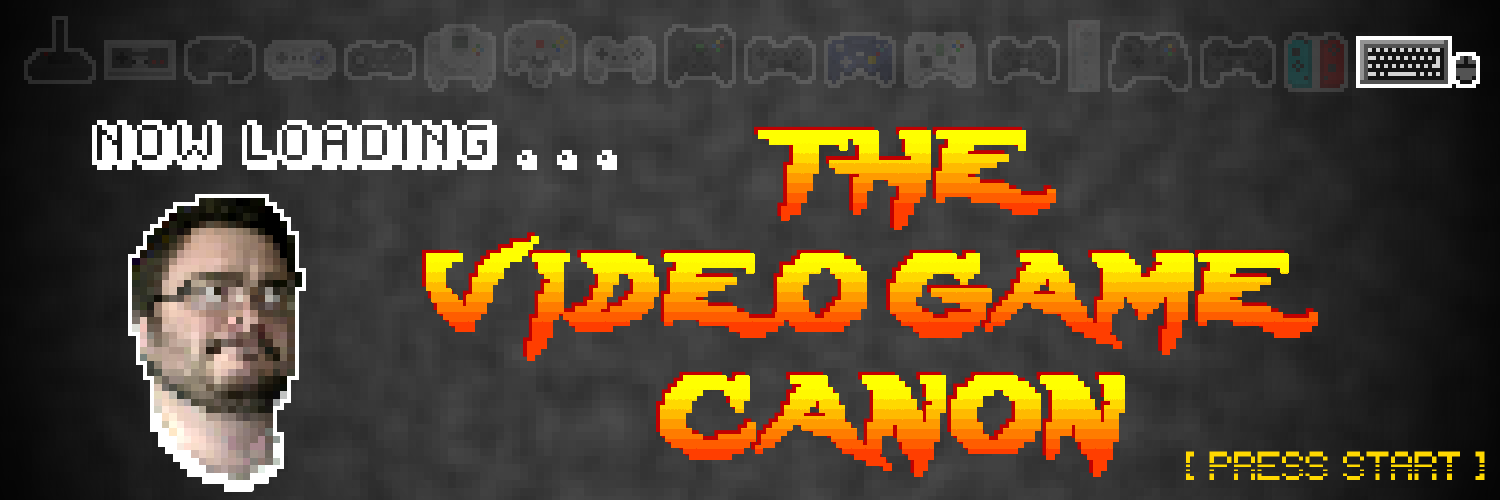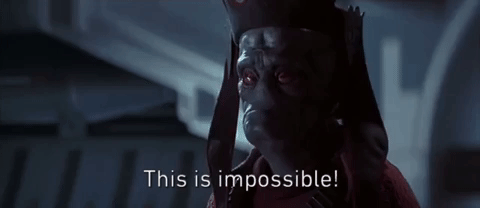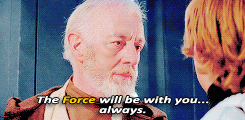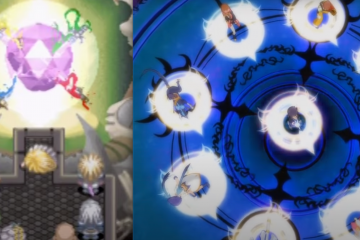
The following is part of Now Loading, a series that renders verdicts on whether or not your favorite video games deserve a place in the canon of works that have contributed to video-game storytelling in landmark ways. Read the series’ full mission statement here.
So, quick anecdote about the modding community for games like this, which were not meant to be modded: when Episode VII came out, someone went all the way back to this game and created a cross-guarded saber mod. That’s so awesome it hurts.
And I definitely replayed the whole game with that mod.
Welcome, young Padawans! Today our subject is Star Wars: Knights of The Old Republic (KOTOR), a Bioware RPG released in 2003—wait, what’s that, young one? Blaster fire?! Anakin running around the temple in a hood, anger-crying? You silly Jawa, that’s just a training exercise! Now pay attention, this will be on your next test!

If you’ve read any of my work on With a Terrible Fate in collaboration with Jaron R. M. Johnson in the Hero of Time Project, you probably know we spend an exorbitant amount of time talking about The Legend of Zelda. What you might not know that I spend an equally ridiculous amount of time talking about Star Wars. Star Wars is a defining staple of modern culture, and has been, is now, and will forever be one of the most influential film series of all time.
So, when it comes to talking about a Star Wars game, we’re not only taking into account its storytelling abilities: we’re also considering this particular game’s relationship to its mega-huge original intellectual property, or “IP” for short. Now, that does not mean that KOTOR gets a free pass into the Canon because it’s Star Wars—there are plenty of Star Wars games that I personally don’t think would ever see the light of day as far as the Canon is concerned.
But, again, we have to analyze the storytelling of a game to test for canonicity. And part of that analysis is looking at that story’s impact on the rest of the industry, and on how stories are told in future games. In this case, I’m going to include its impact outside of gaming as well, because I think that’s just as important for this particular game.
With that lengthy caveat out of the way: Does KOTOR belong in the Video Game Canon?!

KOTOR is considered by many to be a classic in gaming, and possibly the most popular extended-universe story ever told. It’s important to understand the context behind the game’s development and release, so, without further adieu, let me take you back to the dark ages of my childhood: the early 2000s.
Please hold your retching until after the article…
Why are we digging into the publication history? Well, in my humble opinion, determining whether or not a game was influential enough to change the art of storytelling in gaming, you should at least know a little something about the publication history of that game. That being said, THIS IS STAR WARS, and Star Wars has one of the longest and most complicated publication histories. So, it’s important to understand that in ye olden times of 2003, this was not just a game: it was also Star Wars.
I cannot impress upon you enough the weight that carried.

The history of Star Wars’ galaxy during the 80s and 90s was more or less built on dialogue clues and hinted-at backstories used to enhance a story taking place in Star Wars’ closest equivalent of “modern day”: what’s called “The Legacy Era” that follows Episode VI, which, at the time, was the last film. George Lucas began developing a backstory for the Sith during the production of Episode I. This backstory for the Sith was expanded in post-release materials such as the Phantom Menace novelization and The Essential Chronology. To their credit, these supplemental works expanded the Star Wars story up to 2000-2500 years into the past.
Knights of The OId Republic changed that understanding when it was released by Bioware in 2003, shortly after Episode II: Attack of The Clones. KOTOR’s opening crawl immediately states:

So very quickly, with the re-introduction of the Sith in KOTOR, the lore of Star Wars changed. The KOTOR story and era cover a number of large wars, and conflicts all generally centered on the Sith and their true origins—but obviously, this clashed with Lucas’ vision of how the Sith came to be. So, the story of this game, while true to the extended-universe canon, did not strictly adhere to Lucas’ original vision for the story. KOTOR, along with its subsequent sequels and spin-offs, would build a story unto itself, known as the “Old Sith Wars Era.”
Star Wars publication history is confusing to say the least, but what I can say for certain is that KOTOR launched interest in a totally new era of Star Wars and likely contributed to the expansion of Star Wars’ history. One of the tropes of Star Wars is the idea that this setting in which lasers and hyperspace travel exist should seem futuristic to us, but it is presented as something more of a fairy-tale setting with knights, and emperors, and an old-world way of thinking. So, the world of Star Wars, though often referred to as science fiction, is much more of a science fantasy, meaning that its stories draw on the same elements that make up fantasy stories such as ancient orders, ruins, and long histories of war and noble-sounding names.

In the original film, this idea also manifested itself in nearly everything appearing fairly old and dirty—a visual queue that became a massively welcome staple in the Sequel Trilogy because it underscores not only a certain grittiness, but also a certain strangeness designed to disconnect the viewer from reality entirely.
Many games and books had alluded to and established the foundation of the Galaxy’s deep history, but KOTOR was the among the first to let you live that history—and, to this day, it hasn’t been matched by any other game. While Lucas’ original intention may have been to build a history of a few thousand years and leave the rest to the ether of mystery, KOTOR spawned an interest in mapping out that history: an effort in storytelling that expanded the size of the Legends timeline from a few thousand years to over a hundred thousand years.
Look it up! In Legends Canon, the Republic is 25,000 years old, which is insane(ly awesome)!
Story and Characters: Feel The Power!
The story and premise of KOTOR open in the finest traditions of any good Star Wars story: with an opening crawl that transitions to a roaring space battle between two strange-looking ships.
Your character wakes up on one of these two ships, which, naturally, happens to be the Republic ship that is rapidly losing the battle. As you stumble out of bed, a fellow crew member enters the room and quickly explains, “Hey, get up and help me fight, we’re losing this battle and we need to get to the escape pods—What? Where are we? The Endar Spire, of course! You’re my bedmate, and a soldier aboard this ship which is escorting Jedi Knight Bastila Shan!”

That last point will be important later, but the next few events unfold more or less like this: You and your companion fight your way to the escape pods. Your companion sacrifices himself to allow you to get away, and you meet your next companion, Carth Onasi, near the escape pods. The two of you escape and land on the city planet of Taris, where you are tasked with finding Jedi Knight Bastila Shan and helping her escape the planet.
Through a haphazard series of conversations, gunfights, and eventually being arrested, you do escape the planet. Once away from Taris, you land on the planet Dantooine and discover that you are sensitive to the all-powerful cosmic….force—the Force—and are subsequently trained as a Jedi by the masters who live there.
One of the things that made KOTOR work was its combination of choice, consequence, and an accompanying atmosphere of moral greyness that made your choices seem believable and important. These were fundamental changes to the Star Wars formula, and, frankly, they were highly welcome.
The original trilogy was very morally binary: the good guys were all good, and the bad guys were bad as hell. The only exception to that rule was Darth Vader, and even then, the original three really only dipped a pinky toe into the discussion of the moral grey and how it relates to the force. That’s not necessarily a flaw on the part of the Original Trilogy: the first few films were the stumbling first steps of a massive story, so it makes sense that they were, on some levels, very simple.
But simple binary morality does not a massive expanding universe make; sometimes, you have to spice it up a bit.
The Prequels, by comparison, did at least try to introduce a world populated by morally grey people, institutions, and choices—including the Jedi themselves. If you really pay attention, you can sort of catch Qui Gon’s whole deal about not being a master even though he should be, largely because he’s a pariah among his peers. In fact, dig enough into the lore behind the scenes, and you can learn that Qui Gon was a follower of a concept called “The Living Force,” which differed so much from the standards and practices of the Jedi order that those beliefs cost him a lot in his Jedi career. The best part is that he passed this belief onto Obi-Wan, and even converted Yoda in exile—which means that not only was Qui Gon’s philosophy permanently folded into the training of future Jedi, it also sort of makes him the Moses of his own sect of Jedi, which, while crazy, is certainly fitting, given his flowing locks.

*Smolder*
The prequel films did a terrible job of depicting this world, and the story that Lucas meant to put on screen was lost beneath a cacophony of acting goofs, overdone CGI, and Jar Jar’s annoying, ear-curling voice. This oddly deep world Lucas tried and failed to paint on the silver screen translated much better into the world of role-playing games, and specifically into KOTOR: as a video game, KOTOR had the time to tell a complex story which was able to actually explore these hinted-at and nodded-to moral dilemmas that could never be fleshed out in the confines of a two-hour film.
Back to the story of KOTOR: As you journey throughout the galaxy on a quest to defeat the Sith and save the Republic, your choices begin not only to have an effect on the people around you and the places you visit, but also upon your character’s appearance. If you decide to cut down younglings (because “kids” wasn’t Star Warsy enough for you, George), you start to look pale and glowy-eyed like the evil Sith you are. Naturally, if you don’t kill the younglings (but who are we kidding here) you continue to reflect health and inner serenity.
Unlike the films, however, the one aspect that KOTOR lacks is the idea that performing one or two bad deeds causes the dark side to totally and instantaneously envelope you. In the original trilogy, there is a fairly clear implication that once you give in to the temptation of the dark side, it consumes you in a very short time, and also that it is extremely difficult to reverse that fall. This gradual change based on your decisions and actions gives a much more nuanced look at the Force, and adds to the moral ambiguity that you would experience as a Jedi.
The prequels did a little to address this moral ambiguity, but it never truly expanded on it the way they should have. Lore does offer an explanation in a concept called “The Duality of The Force,” in which force users experience extreme emotions because of their ties to the Force itself. But KOTOR more or less gives you the option to toss all of that out: instead, you can toy with the idea that your main character, an all-around good guy, can occasionally do something morally compromising for a variety of reasons. Maybe it’s more convenient this one time, or maybe the situation is life-threatening and your crimes are for the greater good!
Who knows!
The point is that, unlike the original trilogy in which the characters never wavered from a black-and-white moral code—and unlike the prequel trilogy where rigidity caused the downfall of the Republic—KOTOR not only offers you a choice, but also gives you a few “morality mulligans” if your choices turn out to have undesirable ramifications. It creates a poignant atmosphere surrounding the importance of not simply making a choice, but doing your best to make the right choice with the information you have.

Speaking of which…
Gameplay, Music, and Visuals: Choice
What is KOTOR’s key contribution to the canon? Choice.
Sure, you could mention other things, like:
- It’s an excellent adaptation of the world, tropes, and basic mythology and ethos of Star Wars
- It reimagines that past-future, run-down-but-still-technologically-amazing aesthetic that defined the original trilogy
- the music is nothing short of John Williams’ wonderful mind-droppings, consistent with the films
But what really sets this game apart—not only from other Star Wars games, but other video games in general—is how well the gameplay is centered on the choices you make. Whether in the character customization, the ability to explore planets as much or as little as you like (uncovering incredible lore tidbits as you go), or the excellently balanced and interesting dialogue wheel, this game all comes down to how your own actions affect you and the story writ large.
I daresay that the Force is strong in you, and stronger still in your ability to choose.
While KOTOR was not the first game to introduce choice into gameplay, it was one of the first games to refine this idea into one of the key selling points of the game, paving the way for consequence and morality to function as key gameplay elements in a number of genres. The idea of morality as a gameplay element became so popular in RPGs, shooters, and sandbox games in the late 2000s and early 2010s that many seasoned gamers might hear “Choice and Consequence” and roll their eyes, having seen far too many games with a morality system.

Did this really need a morality system?
KOTOR’s implementation of choice was more than a simple system of choosing and moving along: consequence made all the difference in how the game was played, and in the amount of thought expected of the player when making choices. Many of the critical moments of KOTOR are defined by their far-reaching consequences, which not only makes you conscious of the choices you make, but also makes you really ponder the reasons behind your decisions.
For instance: one of the more prominent moments in the game is the recruiting of Juhani, who has fallen to the dark side when the player meets her. If the player befriends her, he saves her life and she joins the party, potentially going on to either become a great Jedi Master or a truly powerful Sith Lord in service to the Empire—but, you can also just kill her. The consequence of killing Juhani is that her best friend, Belaya, also falls to the darkside—though not all at once. It takes time, and when Belaya returns, she is so taken by the dark side she attacks the avatar.
One simple choice—killing Juhani—may make sense at the time. You’re ridding the world of a Dark Jedi, and what could be wrong with that? Well, to paraphrase our friend, the Batman: kill a Sith, and the number of Siths in the world doesn’t decrease. In some cases, the consequences of these actions may do far more harm than good.
“Was I evil, or was I good?” is the principal question here. Through this very simple theme, KOTOR created the illusion of a world that continues to live, breathe, and spin on—even when the player is not present.
Impact on Gaming and Culture: …And Consequence
Try to remember that choice-based systems were in their infancy in the days of Knights of the Old Republic. For an infant concept to be as masterfully depicted as it is in KOTOR is pretty amazing, and KOTOR spawned a slew of games that tried and often failed to replicate its nuance and complexity—up to and including other Bioware games like Mass Effect, or other titles like Fable, Fallout, Dishonored—and many more that are not as noteworthy (sorry). Many of the games KOTOR went on to influence and inspire are canon-worthy themselves, largely because each of these games continued to improve off of the foundation KOTOR laid down in unique and incredible ways.
KOTOR also changed Star Wars as an IP: not only did it create interest in the Old Republic and Star Wars RPGs, but it also helped cultivate interest in the extended universe of Star Wars. That extended universe has become so important that it continues to influence the creative choices made in Disney’s new canon even after being de-canonized.
That’s a ridiculously far reach for a 2003 game that’s basically just D&D 3rd Edition with pixels!

Luminous beings, are we…
BONUS LEVEL: The Twist Ending, and Why it’s Important to Gaming
BUT WAIT, THERE’S MORE. I almost forgot to discuss the most important plot point of the game!
I realize that this is a 15-year-old game, but, assuming that there are folks out there who have not played Knights of The Old Republic, SPOILERS FOR THE PLOT OF KOTOR—and congratulations on returning to civilization.

In one of With a Terrible Fate’s other series, the Hero of Time Project, Jaron and I discuss the many ways in which games blend the line between player and avatar. It has long been thought that the role of silent protagonists is to facilitate the projection of the player onto the “blank slate” of the avatar. In our own discussions, we propose the idea that, in time, the player can be become so consumed by a game’s narrative that the avatar can project a few of their own traits back onto the player.
KOTOR took a really strange turn with this premise.
Remember: at the very beginning of the game, you wake up and have no idea who exactly you are or where you are. A strange man you’ve never seen walks into the room and tells you who you are, where you are, and—most importantly—what is even going on. This momentary disorientation is understandable: being the very opening scene of the game, it’s normal for the player to not know exactly what is happening. This is usually where the developer stops the player and says, “Ok, you’re new, so here’s some context for your place in the story in the form of a semi-awkward conversation that won’t feel as weird as it is because you genuinely need this information in order to effectively place yourself in this situation.”
But then, Bioware pulls a fast one. During an encounter with Darth Malak, the bad guy, he reveals to you that you are actually his old master, Darth Revan, who was captured and stripped of his memories so that he could be turned back against the Sith. It’s a wild twist, made all the more poignant by the way it lines up with the opening of the game.
Think about it: You wake up with no idea of who you are or where you are, and some guy you’ve never seen has to tell you what you’re supposed to know.

But this presents a challenge to our avatar/player projection idea: Bioware has taken your lack of unawareness of the context surrounding the avatar as which you play and used that to create a genuinely amazing twist. In the process, the writers of the story created a wider divide between the player and avatar by introducing and underscoring the life of the avatar as a character separate from the player.
Instead of feeding into the relationship between player and avatar via the exchange of traits, they played with the perspective and ultimately drew a much finer line between the player and the avatar—almost as a purposeful and painful reminder that you and this avatar are not actually one and the same. You would think that reminding the player that they and the avatar are not the same person would only serve to undermine a game based on personal choice, but Bioware ironically strengthens the player’s involvement in the plot instead: the shift in role for the player is subtle enough that you can remain ingrained in the role of the avatar and simply accommodate this new information into how you play as that avatar.
Remember all that talk of choice and consequences? Well, now you have to wrestle with the fact that your choices were all based on your basic understanding that you entered this world a blank slate, even though that wasn’t true! You now have to look back on every single choice with the understanding that whatever you did, for good or for ill, was actually done by the most powerful, most feared Sith in the Galaxy. Even if he didn’t know it.

Bioware’s twist is a reminder that in any RPG, our ability to project onto our custom avatar is ultimately limited, and we just aren’t that avatar, regardless of how involved we may become. I don’t think that’s an invalid thought, or even necessarily a bad thought. I think there’s a case to be made for playing an RPG, roleplaying the thoughts and actions of your avatar, and toeing the line between where that avatar is you and where that avatar is not you. In that way, the exchange of traits between player and avatar becomes more and more relevant as time goes on and we begin to explore playing unorthodox characters and stories.
And that can improve our ability to experience video-game stories.
VERDICT: The Canon is Strong with You, KOTOR
So there you have it! One of the true classics of RPGs, and a pillar of what was probably the golden age of Star Wars’ extended universe. It was a game that continues to serve as the groundwork for RPGs today, and it will likely be a reference in other games as they to are analyzed for entry into the canon. For these reasons, Knights of the Old Republic belongs in the video game canon. Thanks for stopping by,
And may the Force be with you.

CJ Thomas will be featured as a panelist in “Argue With Us: Which Games Belong in the Video Game Canon?”, one of two panels With a Terrible Fate is offering at PAX West 2018. Don’t miss this chance to learn more about the series and join us in a live discussion about whether an audience-selected game belongs in the canon!



